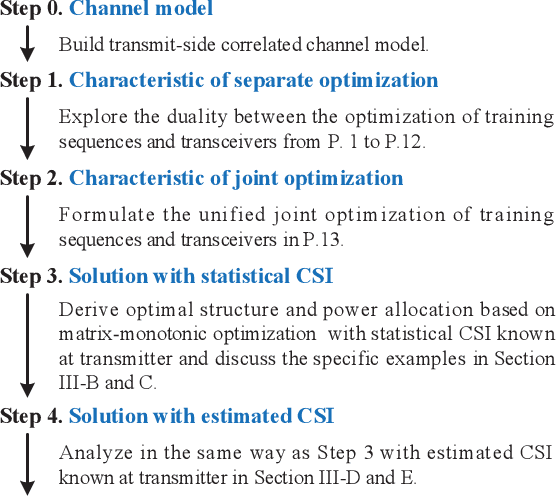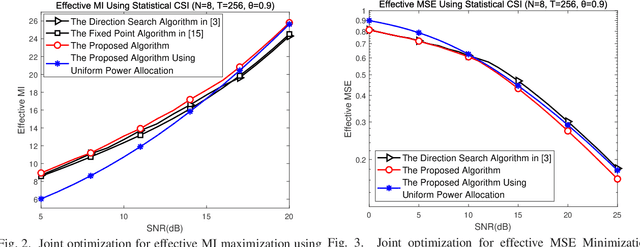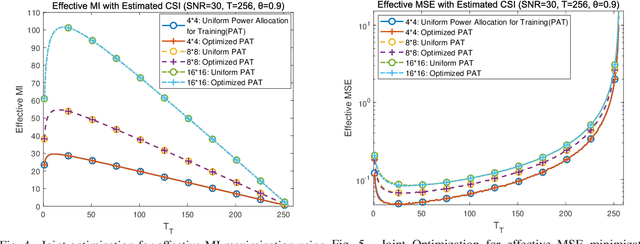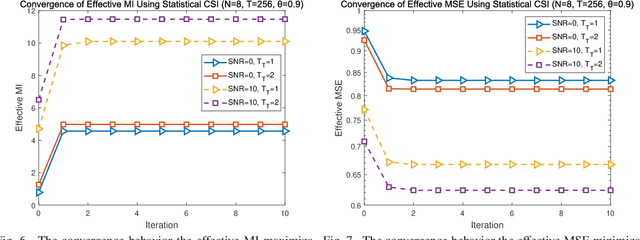Jinpeng Song
Unified Joint Matrix-Monotonic Optimization of MIMO Training Sequences and Transceivers
Sep 22, 2022



Abstract:Channel estimation and transmission constitute the most fundamental functional modules of multiple-input multiple-output (MIMO) communication systems. The underlying key tasks corresponding to these modules are training sequence optimization and transceiver optimization. Hence, we jointly optimize the linear transmit precoder and the training sequence of MIMO systems using the metrics of their effective mutual information (MI), effective mean squared error (MSE), effective weighted MI, effective weighted MSE, as well as their effective generic Schur-convex and Schur-concave functions. Both statistical channel state information (CSI) and estimated CSI are considered at the transmitter in the joint optimization. A unified framework termed as joint matrix-monotonic optimization is proposed. Based on this, the optimal precoder matrix and training matrix structures can be derived for both CSI scenarios. Then, based on the optimal matrix structures, our linear transceivers and their training sequences can be jointly optimized. Compared to state-of-the-art benchmark algorithms, the proposed algorithms visualize the bold explicit relationships between the attainable system performance of our linear transceivers conceived and their training sequences, leading to implementation ready recipes. Finally, several numerical results are provided, which corroborate our theoretical results and demonstrate the compelling benefits of our proposed pilot-aided MIMO solutions.
Generative Grading: Neural Approximate Parsing for Automated Student Feedback
May 23, 2019



Abstract:Open access to high-quality education is limited by the difficulty of providing student feedback. In this paper, we present Generative Grading with Neural Approximate Parsing (GG-NAP): a novel approach for providing feedback at scale that is capable of both accurately grading student work while also providing verifiability--a property where the model is able to substantiate its claims with a provable certificate. Our approach uses generative descriptions of student cognition, written as probabilistic programs, to synthesise millions of labelled example solutions to a problem; it then trains inference networks to approximately parse real student solutions according to these generative models. We achieve feedback prediction accuracy comparable to professional human experts in a variety of settings: short-answer questions, programs with graphical output, block-based programming, and short Java programs. In a real classroom, we ran an experiment where humans used GG-NAP to grade, yielding doubled grading accuracy while halving grading time.
 Add to Chrome
Add to Chrome Add to Firefox
Add to Firefox Add to Edge
Add to Edge